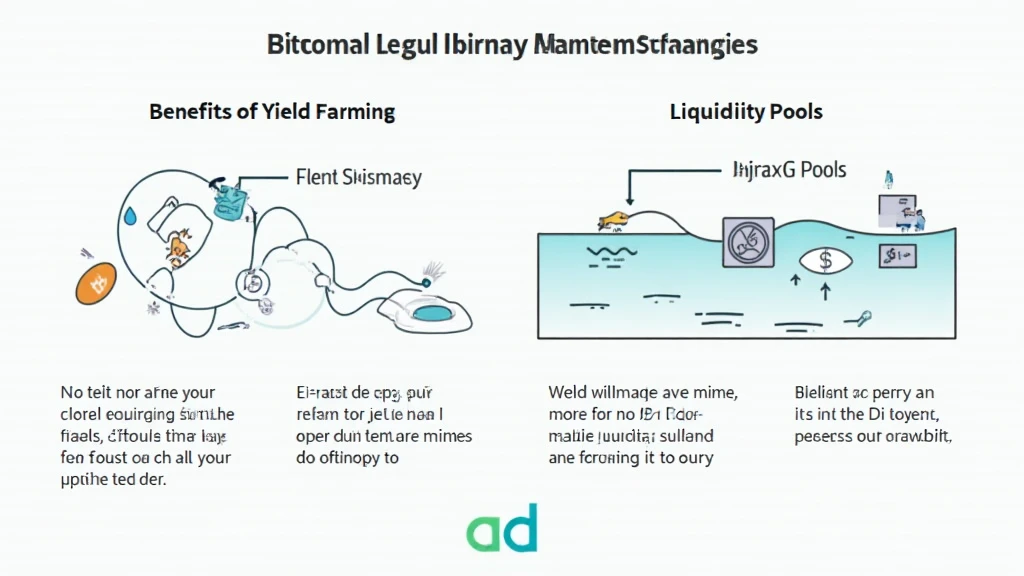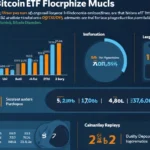Mastering Bitcoin DeFi Liquidity Management: A Guide to Success
In 2024, the DeFi sector witnessed an astounding $4.1 billion lost to hacks, emphasizing the need for robust liquidity management strategies. As the Bitcoin DeFi market grows, it becomes crucial for investors and developers alike to understand and implement effective liquidity management practices.
This article will delve into the intricacies of Bitcoin DeFi liquidity management, exploring its significance and providing insights and strategies geared towards maximizing investment potential while minimizing risks. By the end of this read, you’ll grasp the critical components of effective liquidity management in the Bitcoin DeFi ecosystem.
Understanding DeFi and Liquidity Management
Let’s break it down…

Decentralized Finance, or DeFi, refers to financial services that leverage smart contracts on blockchains, primarily Ethereum, to offer traditional financial instruments without relying on centralized intermediaries. Liquidity management in this space involves ensuring there is enough crypto capital available in market pools for smooth trading and investment activities.
Why is Liquidity Important?
- Trading Efficiency: High liquidity enables traders to buy and sell assets without causing significant price fluctuations.
- Stability: Adequate liquidity reduces excessive volatility, creating a more stable trading environment.
- Attracting Investors: Platforms with robust liquidity draw in more users, leading to increased trading volume and visibility.
Strategies for Effective Liquidity Management
Utilizing Automated Market Makers (AMMs)
Automated Market Makers have revolutionized how liquidity is provided in DeFi. AMMs are algorithms that allow the trading of crypto-assets through liquidity pools. Some popular AMMs include Uniswap and SushiSwap.
Compared to traditional order book exchanges, AMMs offer greater efficiency as they enable users to trade against a pool of assets rather than matching buy and sell orders.
Implementing Yield Farming Techniques
Yield farming, a popular practice in the DeFi ecosystem, allows liquidity providers to earn interest or rewards by depositing their cryptocurrencies into lending protocols.
By strategically participating in yield farming, investors can optimize their returns while contributing to the liquidity of the platforms they support.
Liquidity Pools: Mechanics and Risks
Liquidity pools are a core component of DeFi liquidity management. They allow users to earn passive income through their crypto assets by pooling them into a smart contract.
- Impermanent Loss: Understand the risk of impermanent loss – when the price of your deposited assets changes compared to their price at the time of deposit.
- Smart Contract Risks: Always consider potential vulnerabilities in smart contracts that could be exploited by malicious actors.
Case Studies: Successful Bitcoin DeFi Liquidity Management
To illustrate successful liquidity management, let’s take a look at case studies highlighting effective strategies implemented by leading DeFi platforms.
Case Study: Aave’s Liquidity Mining
Aave is a leading DeFi lending protocol that incentivizes users through liquidity mining. Users providing liquidity can earn token rewards alongside accrued interest from borrowers.
Case Study: Celsius Network’s Liquidity Strategies
Celsius Network implemented various liquidity strategies, including flexible interest rates to attract deposits and competitive borrowing rates to drive usage. Their model showcases effective management of liquidity while ensuring user retention.
The Vietnamese Market and Its Growing Role in DeFi
As a burgeoning market, Vietnam has seen significant growth in crypto adoption. According to recent data, Vietnam’s crypto user growth rate soared by 421% in 2024, indicating a ripe opportunity for DeFi platforms to expand their reach.
Investors from Vietnam are increasingly engaging in Bitcoin DeFi liquidity management, seeking both investment opportunities and innovative financial solutions.
Engaging the Vietnamese Audience
With the rise of Bitcoin DeFi liquidity management, platforms must consider the unique needs of Vietnamese users:
- Educational Resources: Providing local users with comprehensive training materials will enhance user engagement.
- Localized Services: Tailored offerings catering to local regulations and user preferences will foster growth in this dynamic market.
Tools and Resources for Managing Liquidity Effectively
Here’s the catch: choosing the right tools can significantly amplify your Bitcoin DeFi liquidity management strategies. Take a look at recommended tools:
- Ledger Nano X: A cold wallet solution reducing the chances of hacks by 70%.
- Harbor: A protocol providing liquidity aggregation across multiple platforms to enhance user experience.
The Future of Bitcoin DeFi Liquidity Management
The future of Bitcoin DeFi liquidity management appears promising. New innovations and enhanced security measures will likely evolve, ensuring safer and more efficient trading.
Key trends to watch include:
- Cross-chain Liquidity Solutions: Supporting interoperability among varied blockchains.
- Decentralized Insurance: Protocols becoming increasingly popular to mitigate risks associated with smart contracts.
Conclusion: A Path Forward
In conclusion, understanding and mastering Bitcoin DeFi liquidity management can position investors and developers favorably amidst the chaos of the ever-evolving DeFi landscape. Employing strategies like liquidity pools, yield farming, and automated market makers are essential. Moreover, recognizing the growing engagement of markets like Vietnam opens new avenues for growth and investment.
For more insights on cryptocurrency practices, consider checking out resources on hibt.com. The world of DeFi is vast and filled with opportunities. Manage your liquidity wisely and thrive.
Disclaimer: Not financial advice. Consult local regulators.
Written by: Dr. Ai Nguyen, a blockchain technology expert with over 15 publications in the field and contributor to key DeFi audits.




